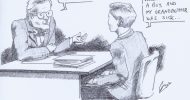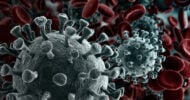About two months ago, a 15-year-old Native American male was riding around in a stolen car on the reservation. “M” and the driver were drinking. And somehow, after he exited the vehicle at 4 a.m., the car struck him. Hours later, it became clear that something was wrong. M was transferred to our pediatric hospital as a trauma and was found to have an unstable vertebral fracture. Conservative treatment with a brace and PT were recommended, and he quickly improved to the point of being dischargeable.
But therein lies the rub: Where to send this teen who has spent the majority of the past year in a juvenile detention facility and had just been placed with a new foster family a week before his injury? By self-report, M has been in and out of detention 15 times in the past three to four years. He has broken into and stolen from all but six houses on the reservation. He has sold and used drugs and has ties to a gang. He is in tribal custody with no parents of whom to speak. He has grandparents and two brothers, one of whom is incarcerated.
The new foster family was willing to take him back, but the father had become acutely ill and was in a coma, and there were also concerns about the level of supervision they could provide given that this injury had occurred while M was living with them. Acute rehab is not an option since he does not have intense therapy needs. Group homes and detention facilities and even a homeless shelter were explored as options for M’s disposition.
Another young man born into another set of circumstances would have been discharged weeks ago to a loving family that could and would provide close supervision and care while he recovers from this serious injury. But M has no loving family, no home, no extra clothes and no money. And so he has essentially been in the custody of the pediatric hospital medicine service for the past two months.
M is not always the most likable guy. The psychologist who met with him feels that he would meet criteria for conduct disorder and substance abuse. He tends to lay low in his room, communicating with providers tersely or, on occasion, in curse words. He eloped from the unit on hospital day 24, walked around the neighborhood, stole and smoked a few cigarettes, but then walked right back into the lobby because he had no other options. When talking about this incident the following day, M stated, “Nobody wants me, and I have nowhere to go.”
Upon returning to the hospital, M had a staff member assigned to sit outside of his room to ensure that he did not try to leave again. 4 days later, he turned 16. A case manager brought a small birthday cake and card to his room. He did not have any visitors that day.
The following days and weeks blurred into each other. The hospital teacher was asked to provide schoolwork for M; nursing assistants would try to engage him in games, movies, or walks; he ordered his meals from the same cafeteria menu day in and day out for more than seven weeks. His grandparents and brother visited a handful of times.
A recent X-ray revealed that his fracture is still too unstable to be out of his brace or to risk any sort of fall or injury, which could lead to permanent paralysis. M’s confinement has been extended for at least another month, which will place him in the hospital on Christmas.
Over the past two weeks, several of my partners have chosen to bring in outside food for M a few times. One day he was given a Jimmy John’s sandwich. Another day, a burger and fries. It is very common for families to bring in food for their children, but M has no one.
Our division chief was approached this week with concerns that these hospitalists are violating Policy #ADM158, last updated in March 2013. This policy addresses non-therapeutic relationships, including ones where “a staff member is overly invested in a child or family in their care.” It goes on to say that “the following behaviors require careful consideration” and “are usually inadvisable.” Some of these behaviors include “personal gift buying for the child or family, or doing favors such as laundry or babysitting.“
This is not the first patient who has been given food or small gifts by a hospitalist. One of my partners has a stash of Beanie Boos in his office. He gives them away to patients who need them — for example, a child with newly diagnosed neuroblastoma who lives in a car. Upon learning of his generosity, his schoolteacher mother and her students collected and donated 100 more stuffed animals to give to our patients.
I have bought a frilly pink outfit from the gift shop when a mom broke down in tears because she did not have a change of clothes for her new baby. Our team has donated money and gifts to a chronic patient’s family whose home was broken into around the holidays. At one time or another, most of us have violated the letter of the law spelled out in Policy #ADM158.
But we are not pediatric hospitalists because we are passionate about adhering to ADM158, we are here because we want to make a difference in the lives of children and their families. ALL children and their families. Not just the ones who are cute and innocent and have devoted parents.
M’s family and the system intended to protect his childhood have clearly failed him. And, certainly, a Jimmy John’s sandwich is unlikely to solve all of his problems. But he is a child, and he has no one else to care about him.
Non-therapeutic relationship or simple human kindness? You decide.
The author is an anonymous physician.
Image credit: Shutterstock.com



















![AI in American medicine [PODCAST]](https://www.kevinmd.com/wp-content/uploads/AI-in-American-medicine-190x100.jpg)

